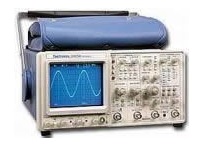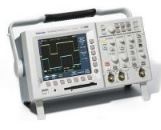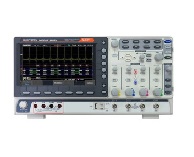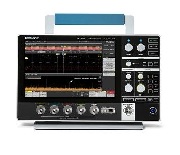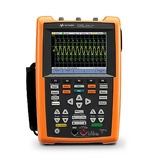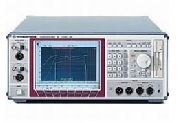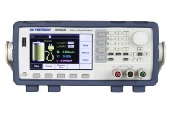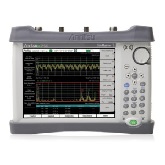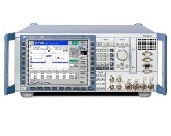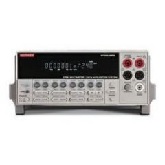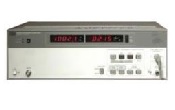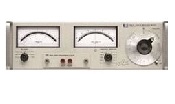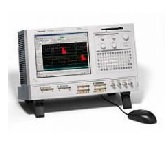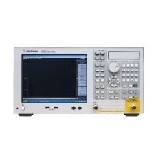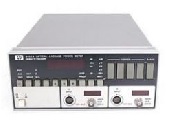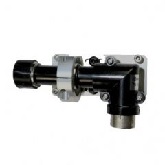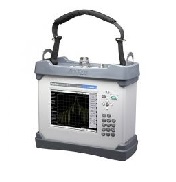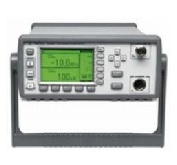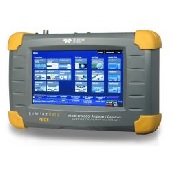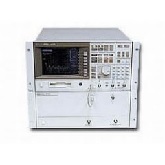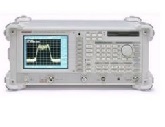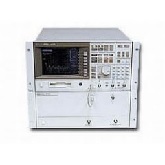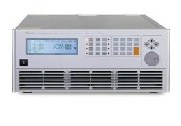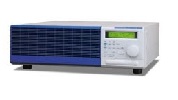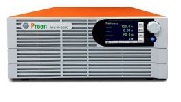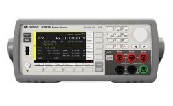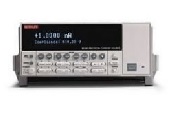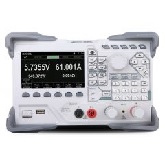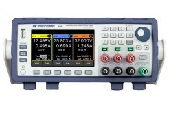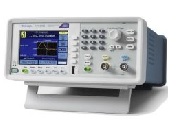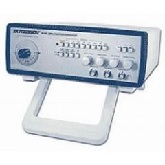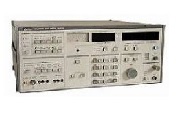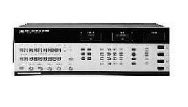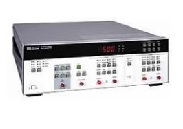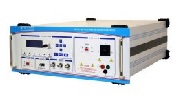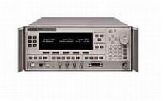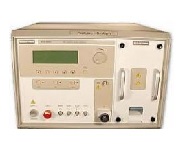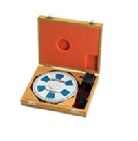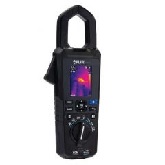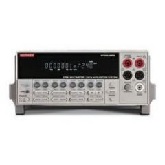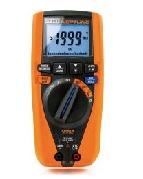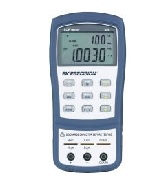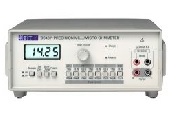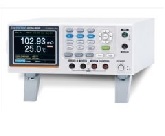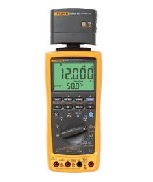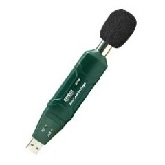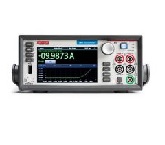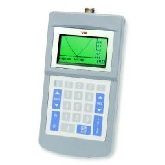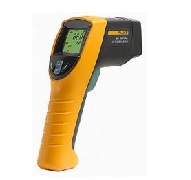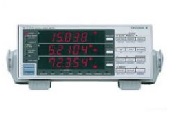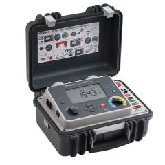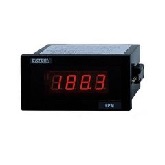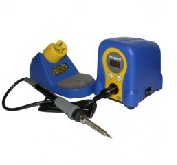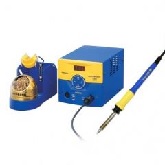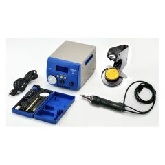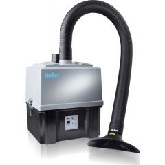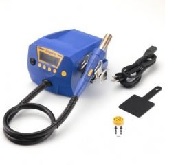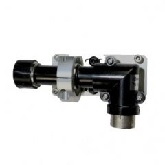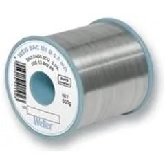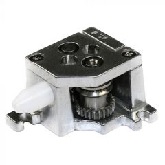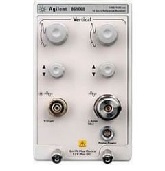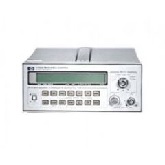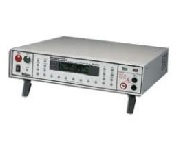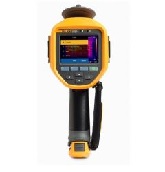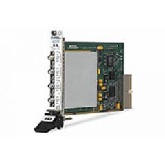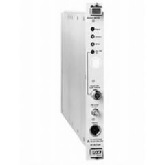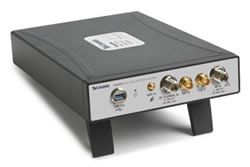RSA603A Tektronix Spectrum Analyzer
Additional Features:
- Frequency range: 9 kHz to 3.0 GHz
- 40 MHz acquisition bandwidth enables real time analysis for transient capture and vector analysis
- Amplitude accuracy of 0.2 dB to 3 GHz (95% confidence)
- Standard GPS/GLONASS/Beidou receiver
- Optional tracking generator for gain/loss, antenna and cable measurements
- Streaming capture can be used to record and play back long term events
- SignalVu-PC software offers real time signal processing with DPX Spectrum/Spectrogram to minimize time spent finding transient problems
- 100 μsec minimum signal duration with 100% probability of intercept ensure you see problems first time, every time
- Application programming interface included for development of custom programs
- Accessories including tablet PC, calibration kits, adapters and phase stable cables offer a complete solution for design, characterization, and manufacturing
- 3 Year Warranty
Applications:
- Characterization of RF devices, subsystems, and systems
- Manufacturing test
- Mobile field operations
Accessories Included
- USB 3.0 cable (2 M), A-A connection, screw lock, quick-start manual (printed), connector covers, power cord, (see power plug options on datasheet), USB memory device with SignalVu-PC, API and documentation files.
The RSA603A USB spectrum analyzer offers high bandwidth laboratory spectrum analysis in a small, very transportable package.
The RSA600 series brings real-time spectrum analysis and wide analysis bandwidth to solving the problems of engineers who need to characterize, validate and manufacture their designs.
The heart of the system is the USB-based RF spectrum analyzer that captures 40 MHz bandwidths with great fidelity. With 70 dB dynamic range and frequency coverage to 3 GHz, you can fully characterize wideband signals up to 40 MHz bandwidths. The USB form factor moves the processing power to the PC of your choice, so you decide when you need more processing power or memory.
The optional tracking generator enables gain/loss measurements for quick tests of filters, amplifiers, duplexers and other components, and you can add cable and antenna measurements of VSWR, return loss, distance to fault, and cable loss as needed.
SignalVu-PC software offers rich analysis capability for your lab
The RSA600 series operates with SignalVu-PC, a powerful program used as the basis of Tek's traditional spectrum analyzers, offering a deep analysis capability previously unavailable in low-cost laboratory solutions. Real-time processing of the DPX spectrum/spectrogram is enabled in your PC, further reducing the cost of hardware. Customers who need programmatic access to the instrument can choose either the SignalVu-PC programmatic interface or use the included application programming interface (API) that provides a rich set of commands and measurements directly. Basic functionality of the free SignalVu-PC program is far from basic.
The RSA600A combined with SignalVu-PC offers advanced measurements
With 40 MHz of real-time bandwidth, the unique DPX spectrum/ spectrogram shows you every instance of an interfering or unknown signal, even down to 100 μs in duration. Finding unexpected signals is easy with unattended mask monitoring. A mask can be created on the DPX spectrum display, and actions taken upon every violation, including stop, save a picture, save acquisition, or send an audible alert.
The tracking generator (Option 04 on the RSA600) is controlled via SignalVu-PC. Here you can enter start-stop frequencies, set number of steps in the span, adjust reference level, and normalize the tracking generator with a calibrate function.
SignalVu-PC application-specific licenses
SignalVu-PC offers a wealth of application-oriented options including:
- General-purpose modulation analysis (27 modulation types including
- 16/32/64/256 QAM, QPSK, O-QPSK, GMSK, FSK, APSK)
- Bluetooth® analysis of Low Energy, Basic Rate and Enhanced Data
- Rate
- P25 analysis of phase I and phase 2 signals
- WLAN analysis of 802.11a/b/g/j/p, 802.11n, 802.11ac
- LTE™ FDD and TDD Base Station (eNB) Cell ID & RF measurements
- Mapping
- Pulse analysis
- AM/FM/PM/Direct Audio Measurement including SINAD, THD
- Playback of recorded files, including complete analysis in all domains
- Signal classification and survey
General purpose modulation analysis
SignalVu-PC application SV21 bundles 27 different modulation types into a single analysis package and offers constellation displays, eye diagrams, symbol tables, trellis diagrams, modulation quality summaries and more. Symbol rates and filter types are adjustable and an internal equalizer is included for signal optimization.
Bluetooth
With application SV27 you can perform Bluetooth SIG standard-based transmitter RF measurements in the time, frequency, and modulation domains. This application supports Basic Rate and Low Energy Transmitter measurements defined by Bluetooth SIG Test Specification RF.TS.4.1.1 for Basic Rate and RF-PHY.TS.4.1.1 for Bluetooth Low Energy. Application SV27 also automatically detects Enhanced Data Rate packets, demodulates them and provides symbol information. Data packet fields are color encoded in the Symbol table for clear identification. Pass/Fail results are provided with customizable limits and the Bluetooth presets make the different test set-ups push-button.
APCO 25
SignalVu-PC application SV26 enables analysis of APCO P25 signals. The following image shows a Phase II HCPM signal being monitored for anomalies with the spectrogram while performing transmitter power, modulation, and frequency measurements to the TIA-102 standards specification.
LTE
Application SV28 enables the following LTE base station transmitter measurements:
- Cell ID
- Channel power
- Occupied bandwidth
- Adjacent channel leakage ratio (ACLR)
- Spectrum emission mask (SEM)
- Transmitter off power for TDD
The measurements follow the definition in 3GPP TS Version 12.5 and support all base station categories, including picocells and femtocells. Pass/Fail information is reported and all channel bandwidths are supported.
The Cell ID preset displays the Primary Synchronization Signal (PSS) and the Secondary Synchronization Signal (SSS) in a Constellation diagram. It also provides Frequency Error.
WLAN 802.11a/b/g/j/p/n/ac
With options SV23, 24 and 25, sophisticated WLAN measurements are easy. On the 802.11ac (20 MHz) signal shown, the spectrogram shows the initial pilot sequence followed by the main signal burst. The modulation is automatically detected as 64 QAM for the packet and displayed as a constellation. The data summary indicates an EVM of -37.02 dB RMS, and burst power is measured at -17.32 dBm. SignalVu-PC applications are available for 802.11a/b/j/g/p, 802.11n, and 802.11ac to 40 MHz bandwidth.
Playback
Application SV56, Playback of recorded signals, can reduce hours of watching and waiting for a spectral violation to minutes at your desk reviewing recorded data.
Recording length is limited only by storage media size, and recording is a basic feature included in SignalVu-PC. SignalVu-PC application SV56 (Playback) allows for complete analysis by all SignalVu-PC measurements, including DPX Spectrogram. Minimum signal duration specifications are maintained during playback. AM/FM audio demodulation can be performed. Variable span, resolution bandwidth, analysis length, and bandwidth are all available.
| Manufacturer | Tektronix |
|---|---|
| Condition | New |
| Frequency | 3 GHz |
| 04 | Tracking generator, 10 MHz – 3.0 GHz |
|---|


